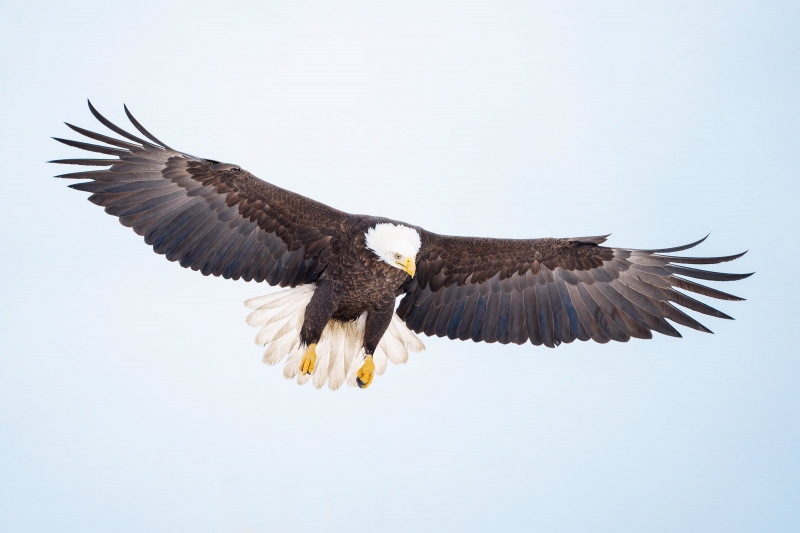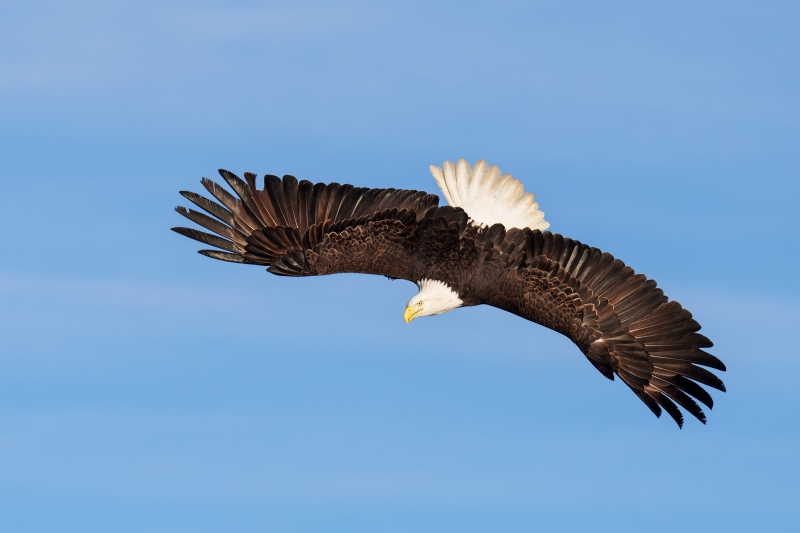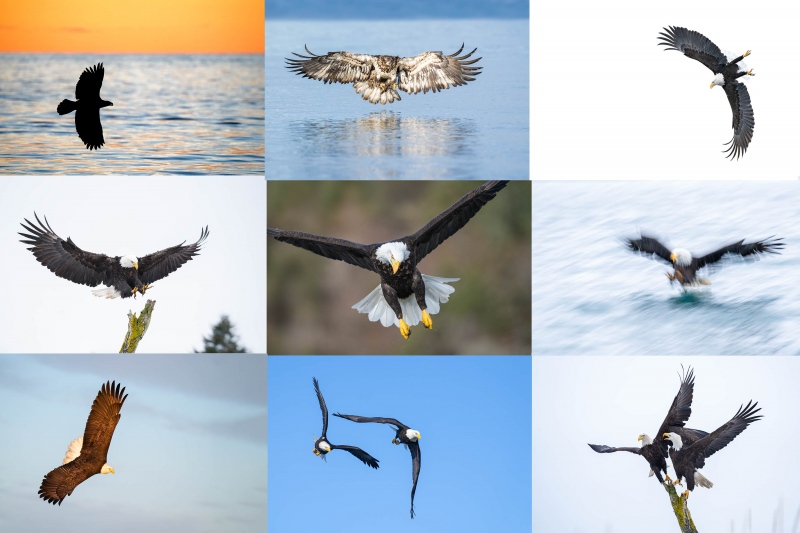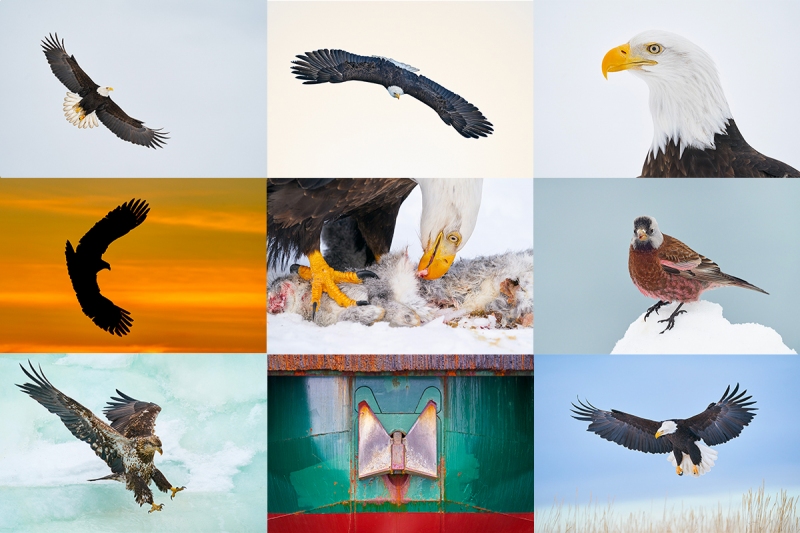Your Call?
Do you prefer Image #1 or Image #2? Why?
Supporting My Efforts Here
If you enjoy and learn from the blog, please consider using one of my affiliate links when purchasing new gear. It will never cost you a single penny. To support my effort here, please order from B&H by beginning your search here. Or, click here, to order from Bedfords and enter the discount code BIRDSASART at checkout to receive 3% cash back to your credit card and enjoy free Second-Day Air Fed-Ex shipping. It is always best to write for advice via e-mail.
In many cases, I can help you save some serious dollars.
Live Life to the Fullest
Join an Instructional Photo-Tour. Better yet, sign up for both Homer trips.
Don’t Look Now
Don’t look now, but this post marks 27 consecutive days with a new educational post written just for you.
What’s Up?
Conditions were perfect for our last morning on the sharp-tailed lek. The birds, however, did not cooperate. As many as five females stayed on the far side of the ridge just out of photographic range. All in all it was a great trip. Huge thanks to Kevin Hice for the invite and his efforts on getting us in the blinds in great position. With perfect weather in South Dakota we did fabulously well with the Greater Prairie Chickens. We did not do quite as well with the sharp-taileds in North Dakota as we had too much wind at times, some clouds, and due to the fact that the grouse are more difficult to photograph than the chickens. That said, we all got some beautiful stuff on both species. Thanks to Anita North for helping Kevin setting up and taking down the blinds.
Today is Thursday 25 April 2024. I fly from Bismarck, ND to Dallas (DFW) to Orlando. If all goes well I should be landing at MCO at about 9:15pm. Jim and I will not get home till 11:30 or so. I hope that you have a great day.
Please remember to use the B&H links that are found on most blog pages and to use the BIRDSASART discount code at checkout when purchasing your new gear from Bedfords to get 3% back on your credit card and enjoy free second-day air FedEx. Please, also, consider joining a BAA IPT. You will be amazed at how much you will learn!
If an item — a Delkin flash card, or a tripod head — for example, that is available from B&H and/or Bedfords, is also available in the BAA Online Store, it would be great, and greatly appreciated, if you would opt to purchase from us. We will match any price. Please remember also to use my B&H affiliate links or to earn 3% cash back at Bedfords by using the BIRDSASART discount code at checkout for your major gear purchases. Doing either often earns you free guides and/or discounts. And always earns my great appreciation.
|
|
|
This image was created on 16 February 2024 at Kachemak Bay on a Homer Bald Eagle IPT. I used the handheld Sony FE 300mm f/2.8 GM OSS Lens (Sony E) and The One, the Sony Alpha 1 Mirrorless Digital Camera.. The exposure was determined via Zebras with ISO on the Thumb Dial. ISO 1600: 1/2500 sec. at f/2.8 (wide open) in Manual mode. AWB at 11:53:15am on a cloudy morning. Tracking: Zone AF/C with Bird-Eye/Face Detection performed perfectly. Click on the image to enjoy a high-res version. Image #1: Bald Eagle braking to land |
Cloudy With Snow on the Ground for Underwing Detail
You cannot beat snow on the ground and soft light for revealing the detail in the dark underwings of Bald Eagles of any age. Be sure to expose far to the right to maximize detail in the dark tones without toasting the white feathers of the heads of the adults. Remember that only RawDigger can properly evaluate the brightness of exposure of your raw files. Most importantly, the snow acts as a giant reflector that evenly illuminates each and every feather with zero shadows.
Cloudy White RGB Values
Out of curiosity, I opened the TIFF file in Photoshop and checked the RGB values for the brightest whites on the head. For image #1 they were nearly balanced perfectly: 251, 251, 250. In theory, there should not be a color cast on the underwings. At times, however, there may be a small magenta or green cast in an eagle’s dark feathers. There are lots of way to deal with those.
Variable Lighting Conditions in Homer
On a Homer IPT, you will learn to make perfect exposures on sunny days and cloudy days, no matter the system you are using.
Exposure Question
How many more stops of light was I dealing with on the sunny day as compared to the cloudy day? Do the math and leave a comment.
|
|
|
This image was created on 27 February 2024 at Kachemak Bay on a Homer Bald Eagle IPT. I used the handheld Sony FE 70-200mm f/2.8 GM OSS II lens (at 200mm) and The One, the Sony Alpha 1 Mirrorless Digital Camera.. The exposure was determined via Zebras with ISO on the Thumb Dial. ISO 500: 1/4000 sec. at f/4 (stopped down one stop) in Manual mode. AWB at 4:04:19am on a sunny morning. Tracking: Zone AF/C with Bird-Eye/Face Detection performed perfectly. Click on the image to enjoy a high-res version. Image #2: Bald Eagles dorsal view flight |
Sunny and Blue Skies for Dorsal Flight
I am glad that there are more cloudy days than sunny days in winter at Homer as we can shoot all day and not have to worry about the wind direction. Sunny days, however, when the wind is right, can yield some brilliant images. Unless you are exactly on sun angle and the bird has its wing spread perfectly, sunny days will produce harsh underwing shadows. But when an eagle begins to dive, the top of the wings will almost always be lit perfectly by the sun. Results like Image #2 are to be expected on sunny days.
Sunny White RGB Values
Next, I opened the TIFF file for Image #2 in Photoshop and checked the RGB values for the brightest whites on the head. For image #2 they were R = 250, G = 241, B = 235. With more RED, the late afternoon light is beautifully warm and rich. Just as it was and just as I wanted it in the image. The decision on how to render the color belongs to the photographer. Sometimes I will cool the warm light a bit or warm up the cool light.
No Homer IPT Price Increase!
Despite that fact that the hourly boat fee has been increased by 33%, I have decided not to raise the price of the 2025 Homer IPTs. Note that similar trips with 40% less time on the boat cost $5800!
2025 Homer/Kachemak Bay Bald Eagle IPTs
IPT #1: FRI 14 FEB 2025 through the full day on TUES 18 FEB 2025. Five days/20 hours on the boat: $5500.00. Limit 5 photographers/Openings 2.
IPT #2: WED 19 FEB 2025 through the full day on SUN 23 FEB 2025. Five days/20 hours on the boat: $5500.00. Limit 5 photographers/Openings 1.
Register for both trips to maximize your travel dollars and enjoy a $1000 discount while you are at it. In 2024, three of the five participants did both trips!
This trip features non-stop flight photography as well as many opportunities to create both environmental and point-blank portraits of one of North America’s most sought-after avian subjects: Bald Eagle (Haliaeetus leucocephalus). Other reliable subjects will include Sea Otter, Glaucous-winged and Short-billed (formerly Mew) Gulls.
In addition, we should see Common Murre, Black Guillemot, Pelagic Cormorant, two or three species of loons, and a smattering of ducks including two species of merganser, all three scoters, Common and Barrow’s Goldeneyes, Bufflehead, Harlequin, and Long-tailed Ducks. Close-range photographic chances for these species will require some good luck. Some of these species, especially when in flocks, can, however, often be used effectively when pleasing creating bird-scapes.
If we need to be out early, we will be the first boat out. If the conditions are great, we will stay out. And when there is a chance for sunset silhouettes, we will be in the right spot.
We will be traveling through gorgeous wilderness country; landscape and scenic opportunities abound.
Also featured is a professional leader, often referred to as the world’s most knowledgeable bird photography trip leader and instructor. He is conversant in Canon, Nikon, and Sony. You will learn practical and creative solutions to everyday photographic problems. You will learn to see the shot, to create dynamic images by fine-tuning your compositions, to best utilize your camera’s AF system, and how to analyze the wind, the sky conditions, and the direction and quality of the light. This is one of the very few trips Homer trips available where you will not be simply put on the birds and told to have fun. You will learn to be a better photographer.
|
|
All images from Kachemak Bay in 2022! |
What You Will Learn
You will learn practical and creative solutions to everyday photographic problems. You will learn to see the shot, to create dynamic images by fine-tuning your compositions, to best utilize your camera’s AF system, and how to analyze the wind, the sky conditions, and the direction and quality of the light. This is one of the very few trips Homer trips available where you will not be simply put on the birds and told to have fun. You will learn to be a better photographer.
You will learn to get the right exposure when it is sunny, when it cloudy-bright, when it is cloudy, when it is cloudy-dark, or when it is foggy. Not to mention getting the right exposure when creating silhouettes. You will learn to make pleasing blurs working in manual mode and to create silhouettes working in Shutter Priority mode. Most importantly, you will learn to pick your best flight photographs from tens of thousands of images.
You will enjoy working with the best and most creative boat captain on his sturdy, photography-spacious, seaworthy, open-deck watercraft.
There will be only five photographers (not the usual six), plus the leader.
Small group Photoshop, Image Review, and Image Critiquing sessions.
bb
|
|
All images from Homer or Kachemak Bay, AK |
What’s Included
One four hour or two two-hour boat trips every day (weather permitting), all boat fees and boat-related expenses (excluding tips), ground transportation to and from the dock and back to the hotel each day, in-the-field instruction and guidance, pre-trip gear advice, small group post-processing and image review sessions, and a thank you dinner for all well-behaved participants.
What’s Not Included
Your airfare to and from Homer, AK (via Anchorage), the cost of your room at Land’s End Resort, all personal items, all meals and beverages, and tips for the boat captain and/or the first mate.
Important Notes
We toss frozen herring chunks to bring the eagles into photographic range. The late Jean Keene, the Eagle Lady, fed the eagles in Homer for many decades and brought the population back from the brink of extinction.
On great days, the group may wish to photograph for more than four hours. If the total time on the boat exceeds 20 hours for the five-day trips the group will share the additional expense at a rate of $300.00/hour. The leader will pay for the bait.
Some folks may wish to rent their own vehicle to take advantage of local photographic opportunities around Homer. In 2024 those included Moose, Sea Otter, a variety of sea ducks in the harbor, and Great Grey and Short-eared Owl.
Deposit Information
A $3000 non-refundable deposit/trip is required. You may pay your deposit with credit card or by personal check (the latter made out to BIRDS AS ART) and sent via US mail only to Arthur Morris. PO Box 7245. Indian Lake Estates, FL 33855. Your balance, due 90 days before the date of departure, is payable only by check.
In Closing
I have been going to Homer off and on for close to two decades. Every trip has been nothing short of fantastic. Many folks go in mid-March. The earlier you go, the better the chances for snow. The only way to assure that you are on the best of these two trips is to sign up for both of them. If you have any questions, or are good to go for one or both of these great trips, please let me know via e-mail or give me a call on my cell phone at 863-221-2372.
Typos
With all blog posts, feel free to e-mail or to leave a comment regarding any typos or errors.


















Feeding your exposure numbers into my Luna Pro, and adjusting for the iso differences and the 1 stop adjustment on the second shot, it looks like it’s only 2/3 of a stop: first shot EV is 14.3 at iso 1600, and the second is 15.0 at iso 500 (16.0 before your adjustment), so 1 2/3 stops before the adjustment.
I expected it to be more. I could be wrong, as EV is related to iso and the levels of brightness on the subject; it does not consider shutter speed or F/stop, but determines the combinations (of F/stop and shutter speeds at the given iso) that you can select from…. but you already knew that.
Of course this represents the exposures selected, and may not be directly proportional to the ambient light values, especially when using zebras in manual. Regardless, your exposures are right on. Both manage the extremes of the blacks and whites really well, which of course is the whole point.
Thanks, and all the best.
The cloudy one’s are more unique.
Hi, Artie. I’m not dure how you’re counting blog posts, but I got two from you today, one dated April 26, this morning; and this one, dated April 25, this afternoon.
I generally prefer sun, but as I learned again this past February with you, some things are better in cloudy conditions (and way better in snowy conditions). I like both images. The difference in exposure was approximately 4 stops. but you topped down one stop on the sunny day so the total difference was 5 stops. That’s definitely an advantage of sunny days! Four (or five) stops is a lot; so you can use a lower ISO AND a faster shutter speed in the sun.
Both beautifully positioned eagles, but without snow, I generally prefer blue sky, so Image #2 for me. Didn’t check twice, but I think 3 stops more light for #2 (aperture 1, shutter speed 2/3, ISO 1-1/3).
I’d assumed our monitors differ, but I see you just like brighter whites. I tend to use 250 for specular highlights or incidental whites, and 233 – 238 for important whites.
Hi Artie,
Safe travels and glad to hear you had such a productive time in the Dakotas. I think you summarized the relative effects of cloudy and sunny days on flight photography and if I am trying to capture eagle strikes on prey then cloudy days or filtered light are almost always preferred.
“What’s up”.. today is Thursday 25th April 2024.
Thanks, but not anymore 🙂
a